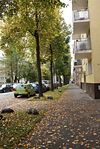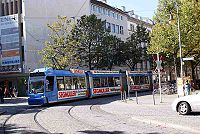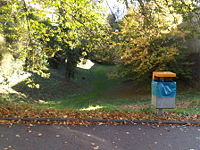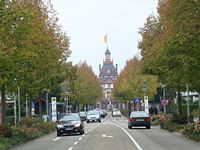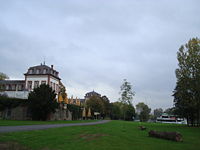Pictures of our Landscapes IMLA Group: Difference between revisions
(→Images) |
(→Images) |
||
| Line 131: | Line 131: | ||
=== Images === | === Images === | ||
<gallery caption=" " widths="200px" heights="150px" perrow="3"> | <gallery caption=" " widths="200px" heights="150px" perrow="3"> | ||
Image: | Image:DUMMY1.jpg | ||
Image:image_02.jpg|image title | Image:image_02.jpg|image title | ||
Image:image_03.jpg|image title | Image:image_03.jpg|image title | ||
Revision as of 17:53, 23 October 2010
---> Back to overview of groups
Fernando Bujaidar Teruel
Images
- Image 01.jpg
image title
- Image 02.jpg
image title
- Image 03.jpg
image title
Description
Please edit your text here..
Author 2: Seah Wei Ping Gabriel
Images
Description
Chinesischer Turm (Chinese Tower)
Located in the heart of the English Garden (Englischer Garten ), Munich, the Chinese tower was built in 1789-1790, as a performance platform. (http://en.wikipedia.org/wiki/Englischer_Garten)
Till today, the Chinese tower still entertained its visitors and guests with traditional music from the brass band and beers from one of the earliest brewery in the region. Housing a spectacular seating space of more than 7000 people, it is set to create an all year round Oktoberfest atmosphere. (http://www.cityscouter.com/travelguides/munich/Chinese-Tower-Chinesischer-Turm.html)
As one of the most frequently visited attractions in Munich, the Chinese tower is a popular social gathering space, both for the locals as well as foreigners. Together they drink; chat, sing and dance, under the Chinese tower in the English garden of Munich, Germany. To find such a Chinese pagoda in such context is ironic, but nevertheless, it provides the vast park with a distinctive landmark. Which otherwise would be a real challenge for the visitors to find their ways or even to set a place for meeting.
Also the language of the Tower narrates the possibilities that cultural influence of the Chinese once swept across this land. Creating immense fascination that inspired Architects to construct a 25 meter high tower in the middle of a European city.
Although the Chinese architecture physically dominates the space, the local culture remains as the soul of the place. In other words, the actual atmosphere is still formed and shaped by the Bavarian living habits and lifestyle.
Marienplatz(Munich City Centre)
Known as the city centre of Munich, it served as an important public square to the city since 1158, hosting various important social events. (http://www.aviewoncities.com/munich/marienplatz.htm)
Today the square is dominated by the gothic style architecture of the new townhall, built in 1867 - 1909, it was the solution to the overcrowded old townhall back then. (http://www.aviewoncities.com/munich/marienplatz.htm)
Inhabited by shops, traditional restaurants, souvenir kiosks and the fact that it is the old city square, Marienplatz earned itself the title as a ‘must visit place’ in numerous travel guides . However, these are the only reasons which explain the thousands of people visiting daily.
Well connected to more than 3 busy subway stations, all within comfortable walking distances. Like our vital body system, they depict the arteries to the heart, making circulations through the square natural.
Besides that, varieties of businesses and activities flood into the square, resulting in a lively and vivid atmosphere, which is able to attract and retain the crowd. These also act as a relief to the network of busy streets, creating a pause to the dynamism.
One clear example of the effect can be seen daily during the 1100, 1200, and 1700 hours. At this time of the day, figurines within the famous Glockenspiel perform 2 traditional stories dated back in the 16th century, entertaining the hundred of audiences in front of the gothic facade for a whole quarter of an hour. (http://en.wikipedia.org/wiki/Rathaus-Glockenspiel)
Marienplatz was of course not spare from modernisation but despite the increase of modern shop fronts and contemporary architecture languages, traces of the past are still highly visible and significant. Historical buildings, old streets paving and even old town drainages are retained. Therefore, the possibilities of the experiencing old city charm of Munich today.
Author 3: Carla E.Tosso
Images
- Image 03.jpg
image title
Description
Please edit your text here...
Author 4: Adham Momtaz
Images
Description
Please edit your text here...
Images
- Image 01.jpg
image title
- Image 02.jpg
image title
- Image 03.jpg
image title
Description
Please edit your text here...
Author 6: Giselle Gurgel and Suranjana Datta
Images
Description
Schloss Phillipsruhe (Phillipsruhe Castle) in Hanau, Germany was built by the Count Phillip Reinhard and its construction began in 1701. Located in Kesselstadt, to the west of the city of Hanau, it is on the bank of the river Main. The castle serves as a museum in its main building since 1967, showcasing different aspects of local history.It's garden is also host to seasonal horticulture shows and cultural shows including the Brother Grimm Fairytale festival are experienced in the amphitheatre in the castle park.(1)
The Phillipsruher Allee (Phillipsruhe Avenue), which runs along the river, has the castle as its focal point. This major axis continues in the castle garden, signifying the importance of the castle which is placed centrally on its large and flat ground. This geometry of the road and the garden is influenced by the presence of Schloss Phillipsruhe.
The high wall running along the boundary of the castle grounds confines its landscape within the boundary, with no connections to the river which flows to the right of the castle. The man made water body behind the castle with no association with the river illustrates on the attempt which was made to glorify monarchy and the monarch’s dominating and manipulating character to show his authority, wealth and power over nature.
Since Hanau required more recognized recreation places in the city centre, the ‘’Aue’’ (floodplain and natural form of vegetation along streams and rivers) of Main serves for sports, children’s park and other outdoor activities. Although this Aue includes in its area the land between the castle wall and the river, and these places are physically connected, they are visually not connected. This area with this new use: new needs of recreation for the city’s people, contrasts with the old and authoritative representation that the castle projects.
The different pictures show three different aspects of the castle, but all of them are connected by the importance that it and its owner had projected. The castle is strategically placed both in terms of waterways and roads; as a direct focal point of the road or as a powerful image seen from the river. On the other hand, the landscape garden along with the water body in the castle grounds was created for a more private use of the owner, for him to appreciate his own grandiosity and acquirements.
(1). Source - http://de.wikipedia.org/wiki/Schloss_Philippsruhe, http://www.hanau.de/kultur/museen/index.html
Author 7: Balázs Dukai
Images
- .jpg
image title
- Image 02.jpg
image title
- Image 03.jpg
image title
Description
Please edit your text here...
Author 8: Nemanja Markovic
Images
- Image 02.jpg
image title
- Image 03.jpg
image title
Description
Please edit your text here...
Author 9: Please write your name here
Images
- Image 01.jpg
image title
- Image 02.jpg
image title
- Image 03.jpg
image title
Description
Please edit your text here...
Author 11: Please write your name here
Images
- Image 01.jpg
image title
- Image 02.jpg
image title
- Image 03.jpg
image title
Description
Please edit your text here...
Author 3: Please write your name here
Images
- Image 01.jpg
image title
- Image 02.jpg
image title
- Image 03.jpg
image title
Description
Please edit your text here...
Author 12: Please write your name here
Images
- Image 01.jpg
image title
- Image 02.jpg
image title
- Image 03.jpg
image title
Description
Please edit your text here...
Author 13: Please write your name here
Images
- Image 01.jpg
image title
- Image 02.jpg
image title
- Image 03.jpg
image title
Description
Please edit your text here...



